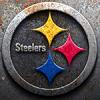When you laser the clear cast, it will "frost up" and look like etched glass. When you laser extruded, it won't. If you bought it from a hardware store, it's more than likely extruded and the wrong product for doing that.
However, you can take a can of spray paint, paint the backside and laser through the paint, and you'll end up with a nice product. Just use a fast drying paint like Krylon, Krylon Fusion, or Krylon H20 (some Rustoleum paints take hours to dry).
Hehe....Lee beat me to the borg comment 
Lasers : Trotec Speedy 300 75W, Trotec Speedy 300 80W, Galvo Fiber Laser 20W
Printers : Mimaki UJF-6042 UV Flatbed Printer , HP Designjet L26500 61" Wide Format Latex Printer, Summa S140-T 48" Vinyl Plotter
Router : ShopBot 48" x 96" CNC Router Rotary Engravers : (2) Xenetech XOT 16 x 25 Rotary Engravers
Real name Steve but that name was taken on the forum. Used Middle name. Call me Steve or Scott, doesn't matter.





 Reply With Quote
Reply With Quote












